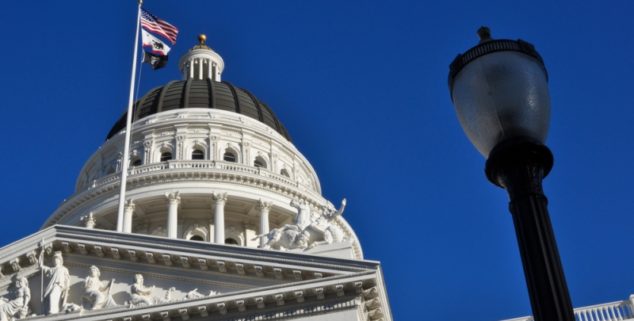News
LAO: Virus’ fiscal impact lower than governor’s estimate
 State Capitol in Sacramento. (Photo: Brandon Bourdages, via Shutterstock)
State Capitol in Sacramento. (Photo: Brandon Bourdages, via Shutterstock)The public health emergency associated with the coronavirus disease 2019 (COVID‑19) pandemic has resulted in sudden and severely negative economic consequences for California. This has significant implications for the state’s budget.
This report—our Spring Fiscal Outlook—provides an update on the budget’s condition in light of this seismic shift. Specifically, we provide our estimates of the potential size of the budget problem—assuming a baseline level of expenditures—that the Legislature could face for 2020‑21.
The Legislature’s nonpartisan fiscal adviser projects budget deficit of $18 billion to $31 billion.
Ultimately, the May Revision will include different revenue estimates and expenditure proposals than we used to arrive at our assessment of the budget problem. In fact, the administration very recently released an estimate of the budget problem—about $54 billion—that is significantly higher than either of our estimates.
The intent of this document, however, is to give the Legislature a sense of our estimate of the baseline problem going into the May Revision and to help prepare policymakers for the tremendous fiscal challenges ahead.
Report Includes Two Economic Scenarios. Although much is unclear about the economy, we can be fairly confident that the state currently is in a deep recession. The budgetary impact of that recession will depend on its depth and duration, which are difficult to anticipate. In light of this uncertainty, our outlook presents two potential scenarios (1): a somewhat optimistic “U‑shaped” recession, and (2) a somewhat pessimistic “L‑shaped” recession. These scenarios do not depict the best case or worst case. Outcomes beyond the range of our scenarios—especially those worse than we show—are entirely possible.
Budget Problem of $18 Billion to $31 Billion. Under the somewhat optimistic U‑shaped recession scenario assumptions, the state would have to address an $18 billion budget problem in the upcoming budget process. Under the somewhat pessimistic L‑shaped recession scenario assumptions, the state would face a budget problem of $31 billion. (A budget problem—also called a deficit—occurs when resources for the upcoming fiscal year are insufficient to cover the costs of currently authorized services.) The administration’s estimate is substantially larger than the higher range of our estimate largely because they focus on gross changes to the budget’s bottom line while our estimates include the net effects of current law.
Budget Deficits Persist for Years to Come. The state’s newly emergent fiscal challenges are unlikely to dissipate quickly and will extend well beyond the end of the public health crisis. Under both of our economic scenarios, budget deficits persist until at least 2023‑24. Over the entire multiyear period, deficits sum to $64 billion in the U‑shaped recession and $126 billion in the L‑shaped recession.
Reserves Are Insufficient to Cover the Budget Problems. Budget reserves are the main tool that the state has to address a budget problem. Under our two economic scenarios, the state has around $16 billion in total reserves. However, due to the constitutional rules governing the state’s main reserve account, we think lawmakers could only have access to around $10 billion of its reserves in 2020‑21. Further, the state’s overall reserve level will be inadequate to cover multiyear budget deficits. That said, unlike in past recessions when the state had virtually no reserves on hand and deep cuts were immediately necessary, California today has built a sizeable reserve, which will cushion the coming budget crunch.
Guidance for Addressing the Budget Problem. The report concludes with our guidance for the Legislature as it begins considering how to address the shortfall. First, we recommend the Legislature use a mix of the tools at its disposal in approaching the 2020‑21 budget problem. These are: using reserves, reducing expenditures, increasing revenues, and shifting costs.
Second, given that multiyear budget deficits are likely to persist for years to come, ongoing solutions are necessary to bring the budget into structural alignment. Third, while programmatic reductions will be necessary, we encourage the Legislature to mitigate actions that could worsen the public health crisis or compound personal economic challenges facing Californians.
Finally, we encourage the Legislature to begin making these difficult, but necessary, decisions in June rather than waiting until future budget actions. Delaying action could only increase the size of the ultimate budget problem and make some solutions more difficult to implement.
—
Editor’s Note: Click here for the full report from the Legislative Analyst’s Office.
Want to see more stories like this? Sign up for The Roundup, the free daily newsletter about California politics from the editors of Capitol Weekly. Stay up to date on the news you need to know.
Sign up below, then look for a confirmation email in your inbox.

Leave a Reply